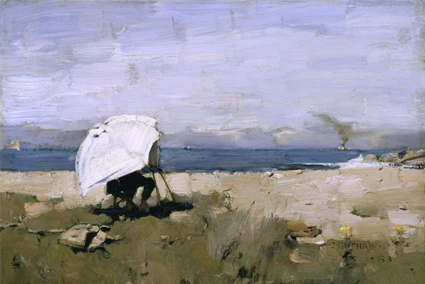The Glasgow Boys at the Royal Academy.
The late Victorian Glasgow Boys combined naturalism with a hint of escapism. The one subject they avoided was the 'choking' city itself.
In 1896 an English journalist with the splendidly Dickensian name of Israel Zangwill paid a visit to Glasgow. Having noted a devotion to art among its more well-to-do citizens he wondered if they were seeking, in its consolations, an escape from the dark realities of their city – not only from its “commercial dinginess” but from the “choking yellow fog” that was its air, a barely breathable soup of industrial pollutants. “Glasgow is all glorious within”, the journalist concluded, “and its inner artistic aspirations make up for and are perhaps inspired by its outer unloveliness.”
The artistic aspirations of late Victorian Glasgow are extensively investigated in “Pioneering Painters: the Glasgow Boys”, currently at the Royal Academy of Arts. This fine and sensitively selected exhibition is the first large-scale survey of the work of “the Boys” to have been staged in London for more than 40 years. James Paterson, William York MacGregor, James Guthrie and George Henry, together with a number of younger painters including John Lavery and Thomas Millie Dow, were among the leading figures of this somewhat amorphous group. They were united by a disdain for the staid academicism that bedevilled most late nineteenth-century Scottish painting, and by an enthusiasm for more modern modes of painting. They were interested in the art of Whistler and, to a degree, the work of the Impressionists, but their great hero was a master of French naturalism, Jules Bastien-Lepage. Like Bastien-Lepage they chose to paint life on the land, but they leavened his harsh sense of the realities of peasant existence with a degree of idealism and also infused their pictures with a strong...


